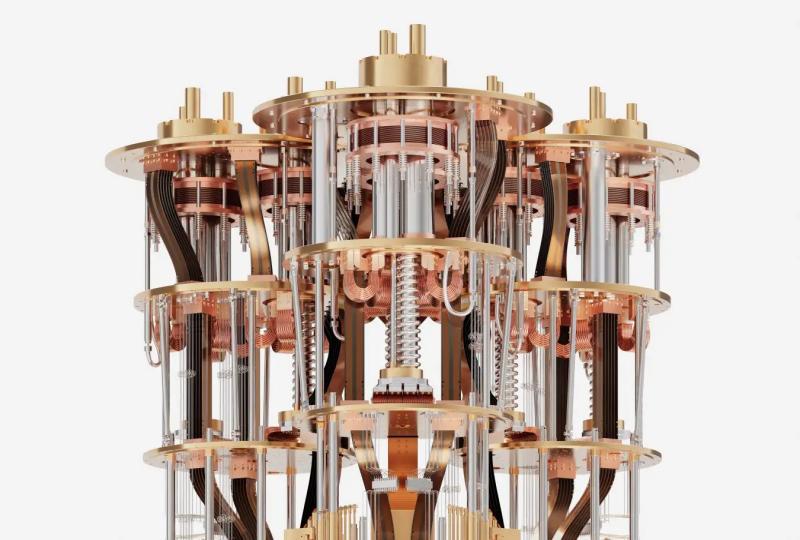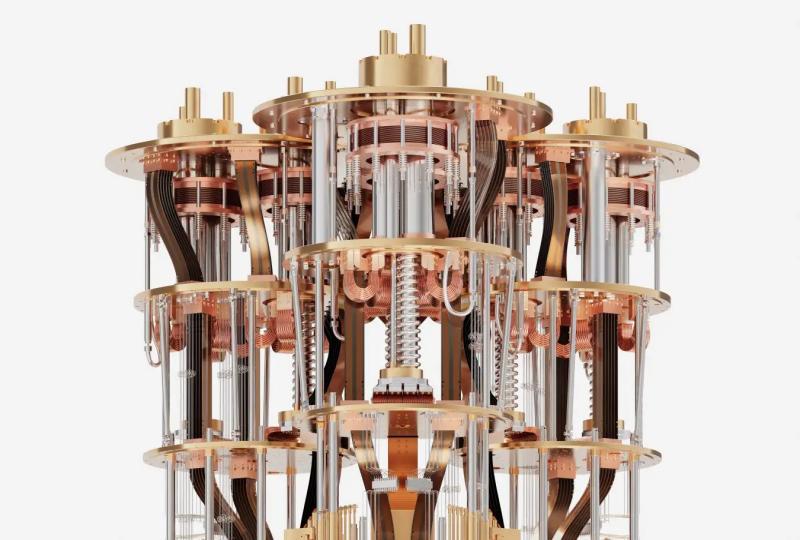Digital-to-Analog Converter (DAC) for Quantum Systems: Enabling Precise Quantum Control
2025.09.28 · Blog Quantum Systemsquantum computerSuperconducting quantum computer
The Digital-to-Analog Converter (DAC) has emerged as a critical component in quantum computing systems, serving as the essential bridge between classical digital control systems and quantum hardware. As quantum technologies advance toward practical applications, the role of high-precision DACs becomes increasingly vital for achieving the quantum advantage.
The Critical Role of DACs in Quantum Systems
Digital-to-Analog Converters in quantum systems perform the fundamental task of converting digital control signals into precise analog voltages, optical pulses, or microwave pulses required for quantum operations. These analog outputs enable the manipulation and control of qubits—the fundamental units of quantum information—allowing for the creation of quantum gates, superposition states, and entanglement between qubits.
In quantum computing architectures, DACs serve multiple critical functions. For superconducting qubits, DACs generate precisely shaped microwave pulses that control qubit states and implement quantum gates. Each qubit typically requires 2-5 DACs for complete control, including drive pulses, flux control, and readout operations. The precision and fidelity of these DAC-generated signals directly impact the overall performance and reliability of quantum computations.
Technical Requirements and Specifications
Quantum systems impose stringent requirements on DAC performance that exceed those of conventional applications. High resolution is paramount, with quantum DACs typically requiring 8-16 bit vertical resolution to accurately represent complex control signals. This precision enables fine-grained control over qubit operations and minimizes control errors.
Ultra-fast settling times are essential, as quantum operations occur on extremely short timescales. Modern quantum DACs must achieve settling times in the nanosecond range or faster to keep pace with rapid quantum computations while minimizing signal distortion. SpinQ's QCM-AWG-2208A exemplifies this requirement, offering 16-bit vertical resolution with 2 GSa/s real-time sampling rate and inter-channel skew below 200 picoseconds.
Low noise performance represents another critical specification. Any noise introduced by the DAC can corrupt control signals and compromise quantum gate fidelity. Advanced quantum DACs must maintain exceptional signal-to-noise ratios, often exceeding 2.9×10⁶ for achieving 0.1% error rates. The noise floor must be minimized to preserve quantum coherence and ensure accurate state manipulation.
Market Growth and Industry Trends
The DAC market in quantum computing demonstrates remarkable growth potential, reflecting the expanding quantum technology sector. According to recent market analysis, the global DAC segment in quantum computing was valued at approximately $22.12 million in 2024 and is projected to reach $124.02 million by 2030, representing a compound annual growth rate of 34.5%.
DAC market growth in quantum computing showing exponential expansion from 2024 to 2030
This exponential growth is driven by several key factors:
-
Scaling quantum systems: As quantum processors advance from dozens to hundreds and eventually thousands of qubits, the demand for high-performance DACs increases proportionally
-
Improved gate fidelity requirements: Next-generation quantum applications demand higher precision control, necessitating more sophisticated DAC technologies
-
Commercial quantum deployment: The transition from research prototypes to commercial quantum computers drives demand for production-ready, reliable DAC solutions
North America currently dominates the market with a 38.78% revenue share, while the Asia-Pacific region is expected to register the highest growth rate during the forecast period.
SpinQ's Innovation in Quantum Control Electronics
SpinQ Technology has positioned itself at the forefront of quantum control electronics development through its comprehensive Quantum Control & Measurement (QCM) System. The SPINQ QCM System exemplifies advanced DAC integration in quantum applications, featuring modular architecture with high-precision RF control electronics designed specifically for superconducting quantum processing units (QPUs).
The system's QCM-AWG-2208A Arbitrary Waveform Generator represents a significant advancement in quantum DAC technology. With eight DC-coupled, single-ended analog output channels operating in the DC-450 MHz frequency range, the system provides exceptional control precision for quantum operations. The 16-bit vertical resolution combined with 2 GSa/s sampling rate enables complex waveform generation essential for sophisticated quantum algorithms.
SpinQ's approach emphasizes hardware-level acceleration through FPGA integration, enabling distributed edge computing that reduces latency and improves system efficiency. This architecture allows for real-time waveform generation and processing directly at the hardware level, minimizing delays that could compromise quantum operation fidelity.
Challenges and Future Developments
Despite significant progress, several challenges remain in quantum DAC development. Miniaturization poses ongoing difficulties as quantum systems scale to thousands of qubits, requiring corresponding increases in DAC count. Developing compact, scalable DAC solutions while maintaining performance specifications represents a key engineering challenge.
Cryogenic operation requirements add complexity, as many quantum systems operate at millikelvin temperatures near absolute zero. DACs designed for room-temperature operation must be modified for reliable performance in these extreme environments.
Integration complexity also presents challenges in seamlessly incorporating DACs with quantum control and readout electronics while minimizing crosstalk and maintaining signal integrity.
Applications Across Quantum Platforms
DAC technology finds applications across various quantum computing platforms. In superconducting quantum computers, DACs generate the microwave pulses necessary for single-qubit and two-qubit gate operations. The precise control of amplitude, phase, and timing enables high-fidelity quantum operations essential for complex algorithms.
For trapped ion systems, DACs control laser amplitude modulation and generate RF signals for manipulating internal atomic states and implementing entanglement gates. Neutral atom platforms utilize DACs for optical control and magnetic field manipulation, enabling both digital and analog quantum computing modes.
Quantum error correction protocols represent an emerging application area where DACs enable the complex pulse sequences required for fault-tolerant quantum logic. As quantum systems advance toward error-corrected computation, the demands on DAC precision and reliability will continue to increase.
Conclusion
Digital-to-Analog Converters represent an indispensable component of quantum computing systems, enabling the precise control and manipulation of quantum states essential for achieving quantum computational advantages. As demonstrated by SpinQ's innovative QCM System and the broader market growth projections, DAC technology continues to evolve to meet the increasingly demanding requirements of advanced quantum applications.
The future of quantum computing depends significantly on continued advances in DAC technology, particularly in areas of resolution, speed, noise performance, and integration complexity. Companies like SpinQ that successfully address these challenges while delivering cost-effective, scalable solutions will play crucial roles in realizing the full potential of quantum technologies across research, commercial, and industrial applications.
The convergence of classical control electronics and quantum hardware through advanced DAC systems represents a critical enabler for the quantum revolution, bridging the gap between digital control systems and the analog quantum realm to unlock unprecedented computational capabilities.
Featured Content






